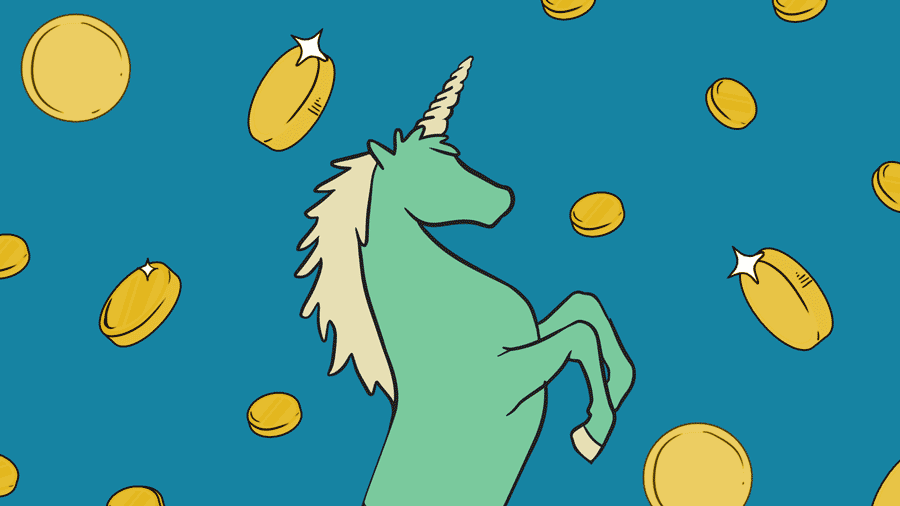It’s not just an illusion caused by the head-spinning rounds.
Venture capital is having an incredible year. New funds are forming, old funds are raising records amounts, and the global market for startup investment is humming. But the top-end of the range is even hotter: over three-fifths of reported VC dollar volume stemmed from nine, ten, and even eleven-figure venture deals.
Follow Crunchbase News on Twitter
But how did we end up here? What happened to catalyze current conditions? That’s what we hope to answer today.
The chart below shows the monthly count of known venture capital deals of $100 million or more, worldwide, since the beginning of 2013. The line represents a three-month unweighted moving average of round counts to show the general trend.

Not so long ago, in the early months of 2013, a nine-figure venture round was a comparatively rare occurrence. One would be announced every week or so, on average. But times change. In mid-July 2018, three companies announced $100M+ rounds over one weekend. At time of writing, 43 companies raised $12.35 billion (in native and converted USD) in nine and ten-figure venture deals so far this month. That’s nearly two such deals per day. This is pants-on-head crazy.
Talk about moving fast and breaking records, right? But it hasn’t always been like this. The chart below shows the same metric as before—the worldwide count of $100M+ venture rounds—but over a more extended timespan.

You’ll notice supergiant rounds remained relatively infrequent between the beginning of 2007 and the middle of 2013 . But then that pattern—which may have stretched back to the collapse of the first tech bubble—came undone.
But why? There are historical antecedents to the current state of play, but they are tough to pin down.
In researching this topic, Crunchbase News reached out to Matt Murphy, a partner at Menlo Ventures.
Matt pointed out that it was around 2013 that “the first wave of ultra unicorns [emerged].” That year, Uber raised $363 million in a Series C round (and $1.4 billion in a Series D nine months later). In the same year, Airbnb raised $200 million in its Series C; Snap raised $163.5 million during a nine month period in its Series A, B, and Series C rounds; Pinterest raised $25 million in its Series D and Series E rounds (and today pulls in ten-figure revenue figures and may go public in 2019); and Palantir raised $196.5 million in its Series H round.
These companies, said Murphy, “created a new expectation [of] potential outcomes.”
As for what’s driving the market today, Murphy cited the recent spate of high-profile tech IPOs and M&A action, and the high valuation multiples those companies commanded at exit, as a likely factor. “It used to be tough to build a $1 [billion] valued enterprise [software] company and now it’s expected,” he remarked.
“[B]usinesses are more predictable and there are more of them. So money chases opportunity and there is a ton [of capital] in SaaS both in terms of inventory and exit valuations,” Murphy further explained. “Similar trends have occurred in consumer but its more concentrated around the big big winners. Seems to be a longer tail in SaaS.”
Despite flying in some “rarified air,” as Murphy put it, nine and ten-figure rounds are likely here to stay. So long as valuations stay high, the dilution incurred by a $50 million round a few years ago might be the same as a $100 million round today.
A rising sea lifts all ships, until some are left high and dry when the tide goes out.
Risk Capital Shifts Into High Gear
If the reign of supergiant rounds really is the new normal, it’s hard to understand why. Comparing the current boom to the dotcom era is difficult due to a lack of robust venture data from the past period, so we can’t contrast today and then effectively. But venture does seem different this time. Companies now regularly wait far longer to go public. This risk shift insulates retail investors in the public market from some amount of downside, but it also means that private-market investors get to capture more of the upside as the company grows.
Here are two examples:
- According to Crunchbase data, Google was founded in September 1998 and raised only $36.1 million in venture funding before going public six years later. In August 2004, it was valued at $21.3 billion at the time of its IPO. Today, fourteen years later, the company is valued at $859 billion. That’s a compound annual growth rate (CAGR) of about 30 percent.
- Also according to Crunchbase data, Facebook was founded in February 2004. The company raised considerably more money—approximately $2.21 billion in venture capital, venture debt, and private equity—before going public in May 2012 valued at $104 billion. Today, a bit over seven years later, the company is valued at $615 billion, the result of a roughly 28 percent CAGR.
Some of the most valuable tech unicorns today—like Uber (founded 2009), Airbnb (2008), Palantir (2004), and SpaceX (2002), among others—either approach or have long ago surpassed their tenth birthdays.
Part of the reason they’ve been able to stay private for so long has been their access to plentiful capital on reasonably favorable terms. But just as circumstances shifted to allow for supergiant rounds to ascend to prominence, this favorable climate could turn forbidding.
Illustration: Li-Anne Dias

Stay up to date with recent funding rounds, acquisitions, and more with the Crunchbase Daily.





![Illustration of a guy watering plants with a blocked hose - Global [Dom Guzman]](https://news.crunchbase.com/wp-content/uploads/quarterly-global-3-300x168.jpg)
67.1K Followers